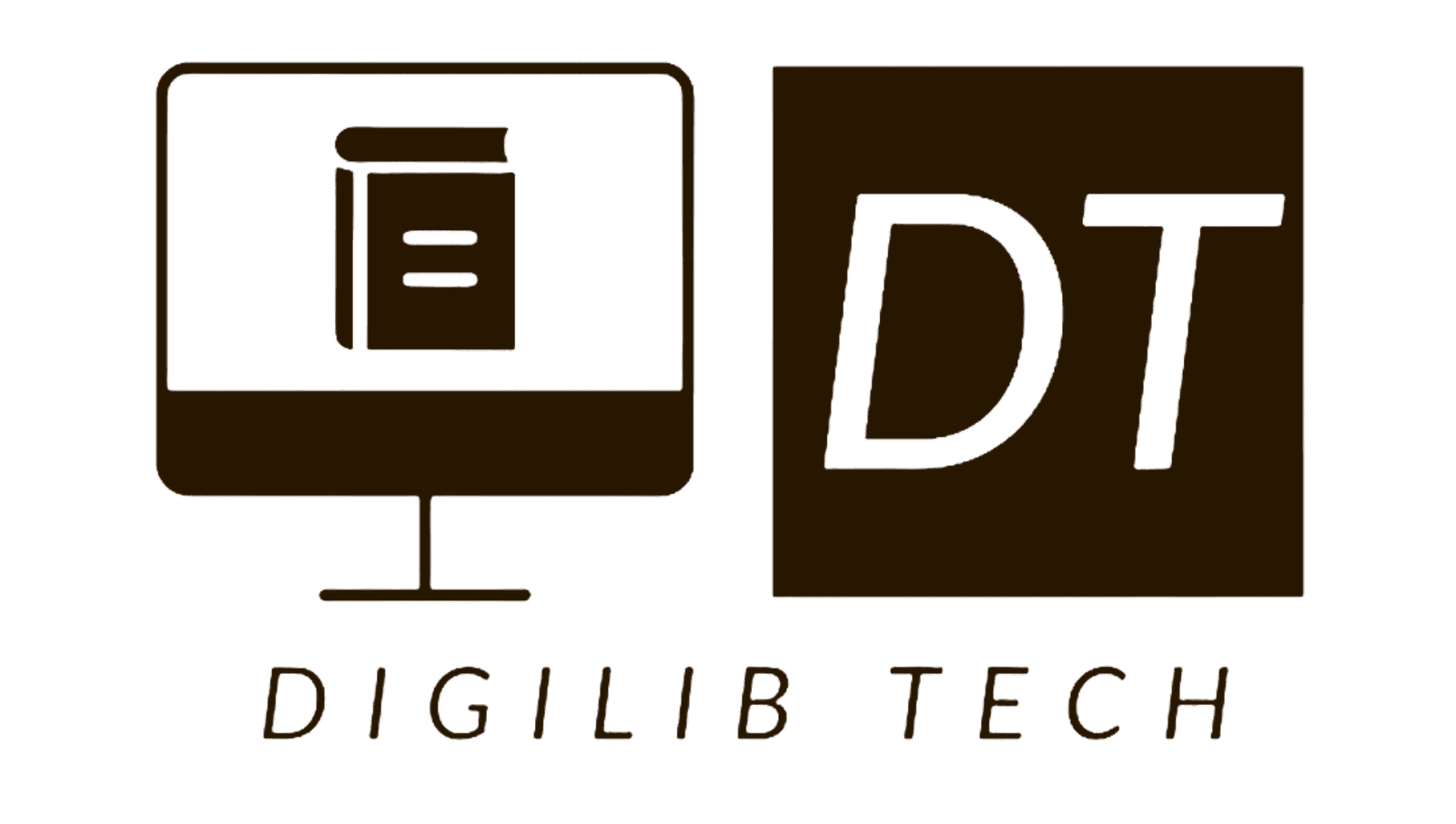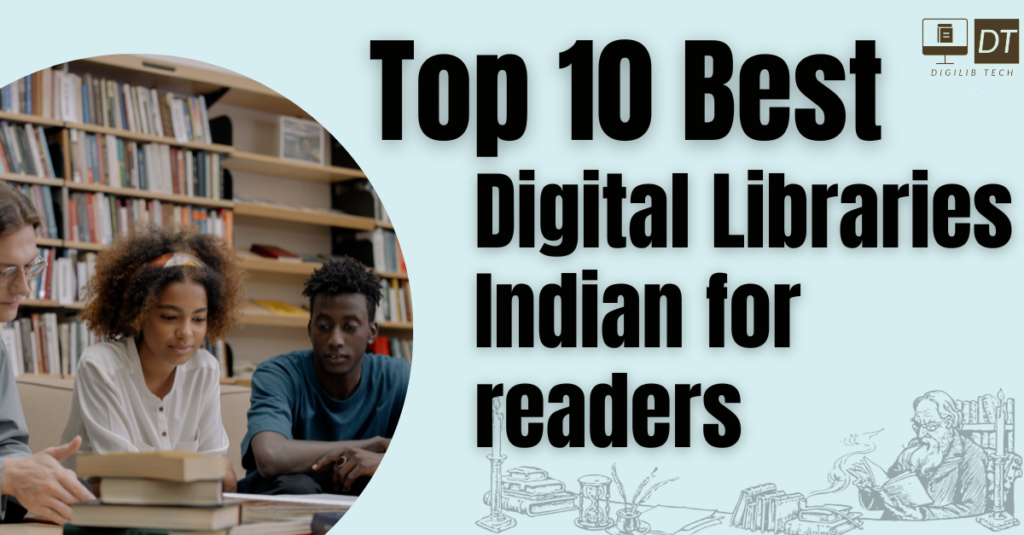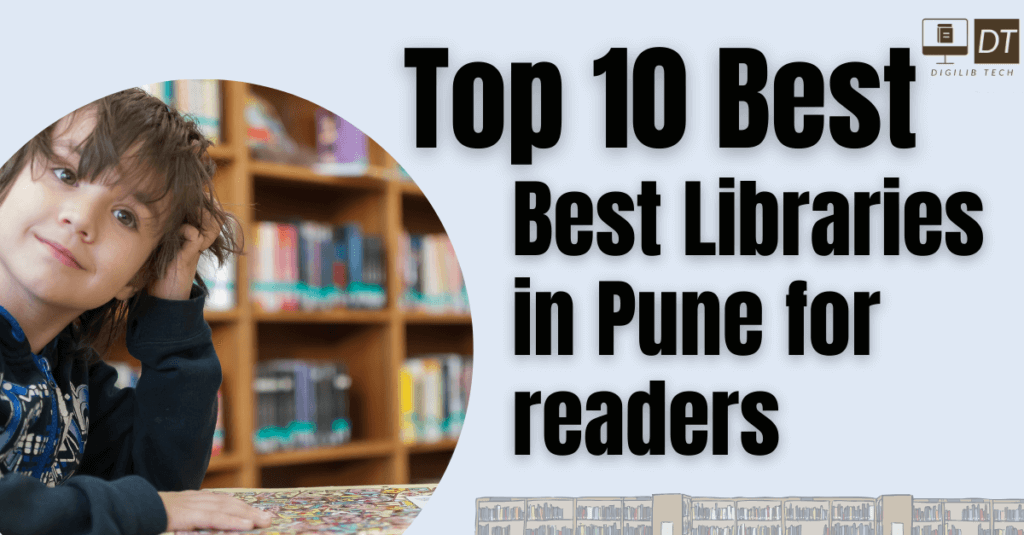Are you trying to find India’s greatest digital libraries?
A digital library is a wealth of knowledge that anyone with an internet connection may access and utilise in a world that is fast becoming digital. Imagine having a huge online library of books, journals, articles, photos, and videos at your disposal with only a click!
Accessing information and resources for a fraction of the price of physical libraries is now possible thanks to digital libraries. They are revolutionary because they enable users to look for certain items, focus their search using advanced search features, and save and highlight crucial information.
However, digital libraries are more than just a repository for documents. They enable users to cooperate and connect with people who have comparable interests, fostering a community of scholars. Users can organize their research and share it with others using features like note-taking and citation tools.
Digital libraries are now a crucial tool for learning, study, and discovery in the fast-paced world of today. They have completely changed how we obtain and use information, and they have created a world of opportunities for individuals who are interested in learning and understanding.
The top 10 digital libraries in India are listed below for use.
1. National Digital Library of India
The Ministry of Human Resource Development of the Government of India launched the National Digital Library of India (NDLI) project to give all citizens free access to digital educational resources.
It seeks to create an extensive digital library that is accessible from any location in the world. Open access to a wide range of resources, including books, journals, manuscripts, audio-visual materials, and more, is offered by the NDLI.
This library’s user-friendly interface and robust search tools were specifically created with students and instructors in mind. Additionally, it provides a number of resources that aid in learning, including online tests, forums, and learning management systems.
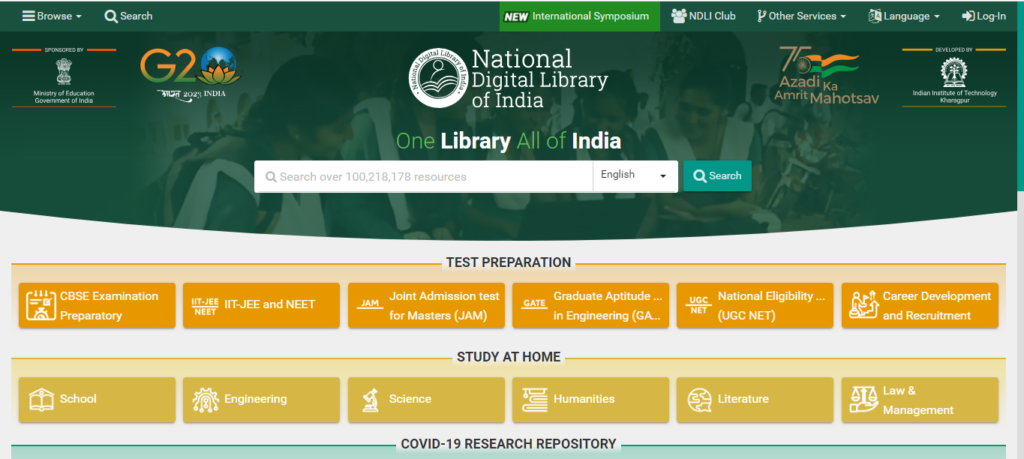
Website link: National Digital Library of India
2. Digital Library of India
The Indian government’s Ministry of Human Resource Development launched the Digital Library of India (DLI) as a way to make digital content freely accessible. It is an online portal that gives users access to manuscripts, digital books, and photos from national cultural heritage institutions.
In order to digitise and preserve cultural heritage assets, including rare manuscripts and ancient writings, the DLI has partnered with a number of institutions. It also makes these materials available to the general public for use in research.
Users may quickly and easily locate the information they need with the DLI’s user-friendly interface and robust search features. It also provides a number of learning-assistance resources, like discussion boards and online tests.
Website link: Digital Library of India
3. British Library Endangered Archives Programme
Through the British Library Endangered Archives Programme (BEAP), at-risk materials were digitised and conserved in partnership with Indian institutions. In order to digitise manuscripts, images, audio files, and other research-critical artefacts that run the risk of being lost due to misuse or deterioration, the initiative works with Indian archive organisations.
The BEAP provides funding support for projects that help digitise threatened archives and make them available online through its website.
This preserves these invaluable resources for future generations and provides easy access to them for scholars worldwide. Additionally, in order to inform people about their cultural history and how to preserve it, the BEAP works with regional organizations.
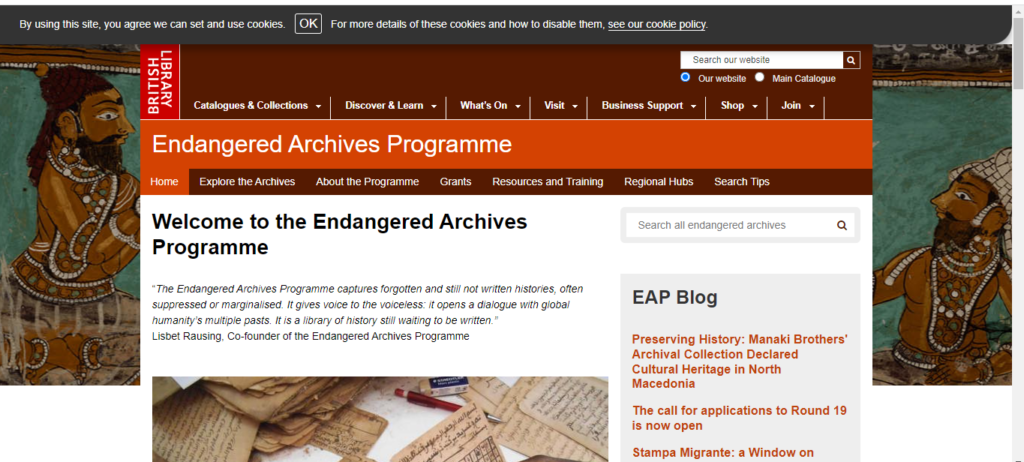
4. Indian Academy of Sciences
Founded in 1934 with the goal of advancing scientific research in India, the Indian Academy of Sciences is one of the country’s leading scientific establishments. The Indian National Science Academy, the National Academy of Sciences India, and the Academy of Sciences for the Developing World are the three main branches of the academy, which has its headquarters in Bengaluru.
The Indian Academy of Sciences’ digital library is an invaluable tool for academics, scientists, and students alike. It has a huge library of scholarly articles spanning several scientific disciplines, such as biology, chemistry, physics, and mathematics. New research papers, journals, and conference proceedings from all around the world are frequently added to the collection.
Both members and non-members of the Indian Academy of Sciences have access to its digital library. Members of the academy do, however, also get access to special publications, discounted subscription prices, and the ability to apply for scholarships and fellowships.
The Indian Academy of Sciences’ digital library is simple to use and navigate. Publications can be found by subject, keyword, author, or title. Research papers can be easily accessed and read on any device by using the library’s choices to download articles and publications in PDF format.
To encourage scientific research and cooperation among scientists, the Indian Academy of Sciences also hosts conferences, workshops, and seminars in addition to its digital library. Additionally, it grants prizes and fellowships to deserving scientists across a range of scientific specialties.

Website link: Indian Academy of Sciences
5. JSTOR
Well-known digital library JSTOR offers a wide range of academic material, including books, journals, and original sources. Founded in 1995, the library is a non-profit organization dedicated to promoting academic research and instruction.
The Indian Academy of Sciences, the Indian Institute of Science Education and Research, and the Indian Council of Historical Research are just a few of the Indian institutions with which it maintains collaborations. Through these collaborations, JSTOR is able to provide regional content that is easily accessed by academics and researchers throughout India.
More than 12 million scholarly books, journals, and primary sources from a variety of fields, including the humanities, social sciences, and sciences, are available in JSTOR’s collection.
The platform’s robust search engine makes it easy for users to locate pertinent articles and resources fast. It is intended to promote academic study. In addition, JSTOR offers tools for managing and analyzing research, such as bibliographic management, citation monitoring, and article sharing and saving.
Both individuals and institutions have access to the library, and its content can be accessed through pay-per-view or subscription options. Academic institutions can choose from a range of subscription options offered by JSTOR, including access to the full archive or particular subject collections.
JSTOR is also available to individual scholars on a monthly or annual basis. For those who cannot afford to access JSTOR’s content, the organization also provides the Register & Read program, which enables users to read a certain number of articles online for free each month.
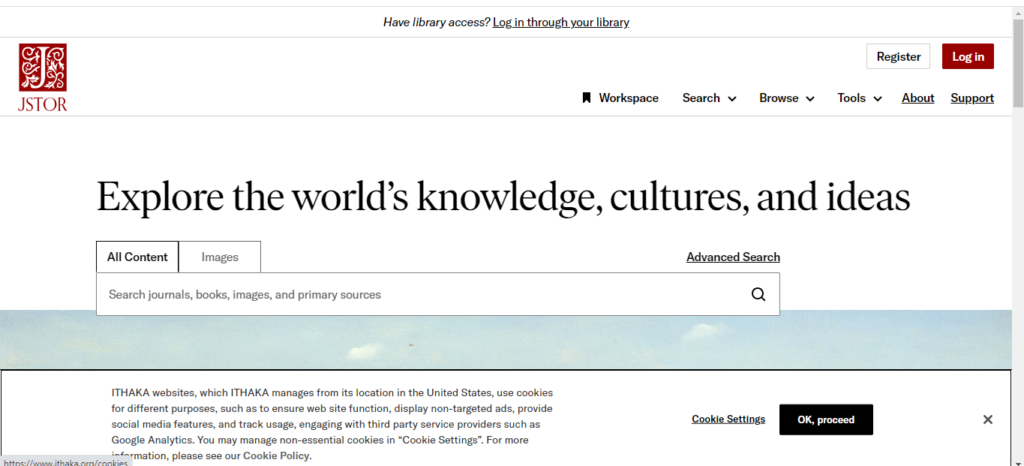
Website link: JSTOR
6. Project MUSE
An online collection of academic books and articles in the social sciences and humanities is called Project MUSE. Developed by Johns Hopkins University Press, it is a non-profit initiative that was first introduced in 1995.
Thousands of academic books, periodicals, and original sources in a wide range of subjects, including political science, anthropology, literature, and history, are available for use at the library.
Project MUSE’s concentration on content from independent and not-for-profit publishers is one of its standout characteristics. This makes important research from smaller publishers—who might not have the means to market their work extensively—available to academics and researchers.
Furthermore, Project MUSE has collaborations with other Indian institutions to make local information accessible, making it a vital tool for Indian academics and researchers.
The content of the library can be found in PDF and HTML formats, and users have the option to search for books and articles by keyword, author, title, or subject. In addition, Project MUSE provides scholars with a number of tools, such as annotation features and citation export.
Institutional subscriptions allow users to access Project MUSE, or individual users can pay for specific articles and books to view them.

Website link: Project MUSE
7. Open Library
A non-profit digital library called Open Library seeks to make millions of books accessible for free. The Internet Archive, a nonprofit digital library whose goal is to enable universal access to all knowledge, is the organization that runs the library.
A network of volunteers supports Open Library by digitizing and uploading books to the website.
In addition to browsing carefully curated collections like the “Classics” or “Science Fiction” collections, users can conduct book searches by author, title, or subject. A book can be checked out for a two-week loan after it is located. Users can arrange and keep their favorite books on a personalized digital bookshelf that the library gives.
Open Library provides free ebook access in addition to a physical book lending scheme that allows users to check out books from partner libraries. The platform is a useful tool for academics, educators, and developers since it offers APIs that allow developers to access and utilize the library’s data.
All things considered, Open Library is an excellent tool for anyone wishing to access and read books online for free.

Website link: Open Library
8. Digital Public Library of America
The goal of the non-profit, cooperative Digital Public Library of America (DPLA) is to provide free access to the cultural and scientific legacy of humanity for all people.
Since its start in 2013, it has expanded into a sizable collection of materials provided by numerous organizations, such as archives, museums, and libraries.
The Digital Public Library of America (DPLA) gives a single point of access to collections from institutions around the country and provides access to over 40 million digital resources, including books, photographs, maps, and videos. The DPLA has agreements with multiple Indian institutions in addition to US institutions’ collections in order to provide local content.
The platform offers tools for searching and browsing the content, and the DPLA collections are accessible to everyone. Lesson plans and activities for teachers are among the educational resources and tools that the DPLA provides to enhance teaching and learning.
The DPLA’s dedication to open access and encouraging the use of digital materials for research and education is one of its distinctive features. In addition to encouraging the use of open standards and technology for digital library activities, the DPLA strives to make its resources openly accessible.
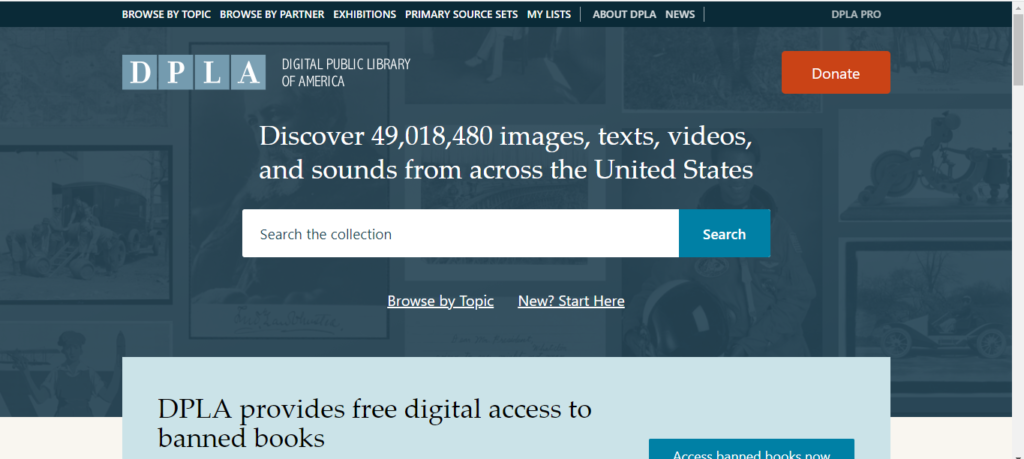
Website link: Digital Public Library of America
9. Internet Archive
A non-profit digital library called the Internet Archive seeks to make knowledge accessible to everyone. Brewster Kahle launched it in 1996, and its headquarters are in San Francisco, California. The goal of the archive is to conserve cultural relics while facilitating unrestricted access to digital content, such as webpages, books, music, and movies.
With more than 40 million books and texts, 5 million audiobooks, 4 million movies, and 5 billion archived web pages, the library has an extensive digital content collection of over 70 petabytes. Public access to the content is free, and donations from individuals, organizations, and governments help fund the archive’s digitization operations.
One particularly noteworthy tool is the Wayback Machine from the Internet Archive, which lets visitors access older versions of websites from the mid-1990s. For researchers, journalists, and anybody else interested in following the development of the web, the Wayback Machine is a vital resource.
The archive welcomes users to add their own materials to the collection and depends on a network of volunteers to digitize and upload content. For anyone interested in accessing and preserving digital content, including scholars and students, the Internet Archive is a priceless resource.
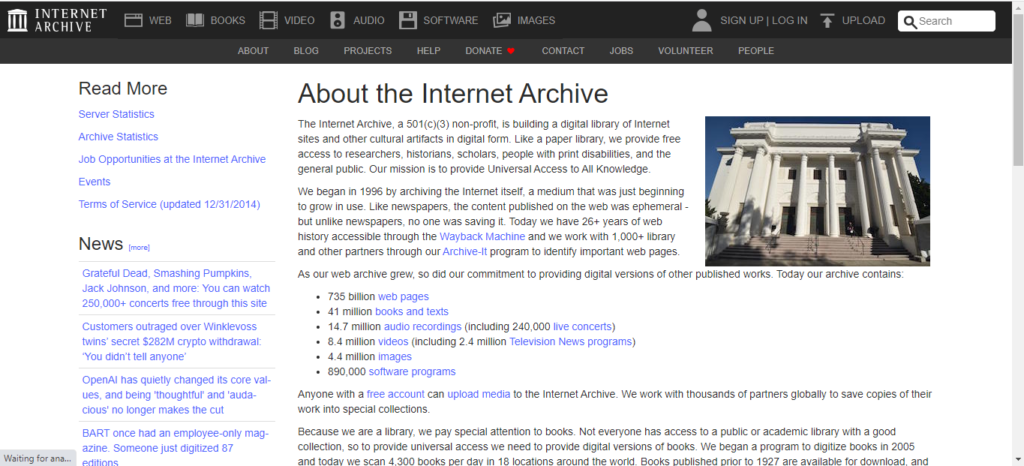
Website link: Internet Archive
10. National Repository of Open Educational Resources
The Ministry of Education, Government of India, is the initiator of the National Repository of Open Educational Resources (NROER). It was established in 2013 with the goal of giving students, instructors, and anybody else with an interest in learning free and open access to excellent educational content.
A large array of digital instructional resources, such as interactive simulations, audio, video, textbooks, and photographs, are available from the NROER. The library offers a vast array of subjects, including languages, social sciences, and math and science.
Hindi, English, and several more Indian languages are among the languages in which the NROER’s resources are available. Anyone with an internet connection can access the library and browse the content by language, grade level, and subject.
The purpose of the NROER is to support the utilization of open educational resources and motivate educators and students to incorporate these materials into their lesson plans.
By giving free access to excellent educational materials that are in line with the Indian curriculum, the program seeks to raise the standard of education in India.
The way we access and use information has changed significantly in the age of digitization, and digital libraries have become a vital and important resource. It’s now more easier than ever to access and retrieve information thanks to cutting-edge technology and lightning-fast internet connectivity.
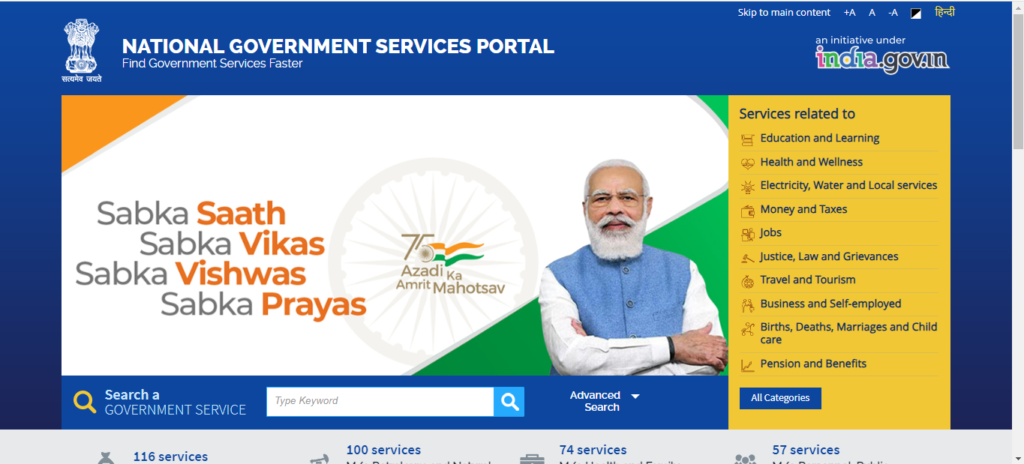
Website link: National Repository of Open Educational Resources
The listing of India’s Top 10 Digital Libraries demonstrates the nation’s increasing dedication to giving its people access to a vast array of digital resources. These libraries provide a wide variety of resources, including books, journals, photos, films, and other kinds of content, that are available for use at any time and from any location.
